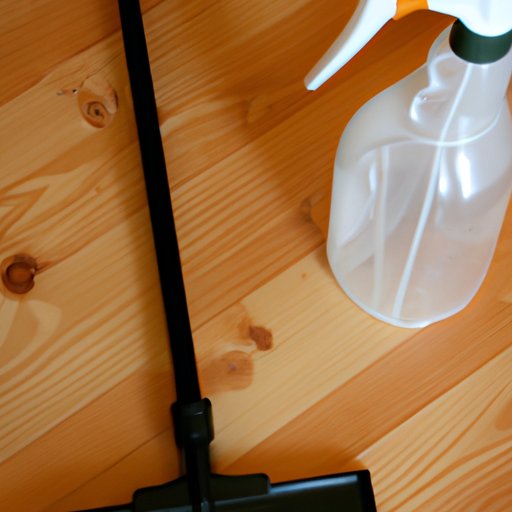
I. Introduction
If you are a homeowner, chances are you have experienced the frustration of finding a stubborn stain on your wooden furniture or floor. Removing stains from wood is not always an easy task, and using the wrong cleaning method can damage the wood. This article is aimed at helping homeowners identify the type of stain and wood they are dealing with and provide step-by-step instructions for safely and effectively removing stains from wood.
II. Types of Wood Stains
There are three types of wood stains: oil-based, water-based, and dye-based. Oil-based stains are typically used to enhance the natural color and grain of the wood while water-based stains are easy to clean up and dry faster. Dye-based stains are designed to add color to the wood instead of highlighting the natural color and grain. To identify the type of stain, read the manufacturer’s label or test a small, inconspicuous area with the cleaning method.
III. Identifying the Type of Wood
Different types of wood react differently to cleaning chemicals. Some woods are more porous and absorbent than others. To identify the type of wood, check the manufacturer’s label or consult a professional. If the label is missing or the wood is antique or reclaimed, observe the color, grain, and texture to narrow down the possibilities.
IV. Using Vinegar to Remove Stains
Vinegar is an effective and natural cleaner that can remove water-based stains from wood. Mix equal parts of white vinegar and water. Dip a soft cloth into the solution and wring it out. Wipe the stained area with the cloth, making sure not to saturate the wood. Let the wood air dry. Repeat the process if necessary. For stubborn stains, try mixing baking soda and vinegar or using a vinegar and olive oil mixture.
V. Using Baking Soda and Water for Oil-Based Stains
Baking soda is an abrasive cleaner that can remove grease and grime from wood. Mix equal parts of baking soda and water to make a paste. Apply the paste to the stained area and rub gently with a damp cloth. Wipe the area clean with a clean, damp cloth. Dry the wood with a towel. Repeat the process if necessary. For stubborn stains, try using mineral spirits.
VI. Using Mineral Spirits for Stubborn Stains
Mineral spirits are a strong solvent that can remove oil-based stains from wood. Wear gloves and protective eyewear before using mineral spirits. Apply a small amount of mineral spirits to a clean cloth. Rub the stained area with the cloth, using a circular motion. Let the wood dry for several hours before applying a new finish. Dispose of the cloth and other materials used properly and safely.
VII. Sanding the Wood
If the stain has penetrated the wood deeply or if the wood has been damaged, sanding may be necessary to remove the stain. Sanding requires a bit more work, but it can take care of most stains. Use sandpaper with a lower grit number first to remove the stain. Then move to a higher grit number to restore the smoothness of the wood. Sand in the direction of the grain. Vacuum or wipe away any dust left over after sanding.
VIII. Applying a New Finish
If the stain is still visible after cleaning or sanding, applying a new finish can cover it up and bring back the shine of the wood. Purchase a finish that matches the type of wood and the previous finish. Follow the manufacturer’s instructions carefully. Apply the finish evenly with a clean brush, using long, smooth strokes. Let the finish dry completely before using the wood again.
IX. Conclusion
Removing stains from wood can be a stressful and daunting task. By following these steps and precautions, you can effectively remove stains while protecting your wooden surfaces. Remember always to test cleaning methods on a small, inconspicuous area before applying to a larger surface. Additionally, to maintain the beauty of your wood items, clean up spills immediately, protect the wood from water damage, and avoid placing hot objects directly on the wood surface.





